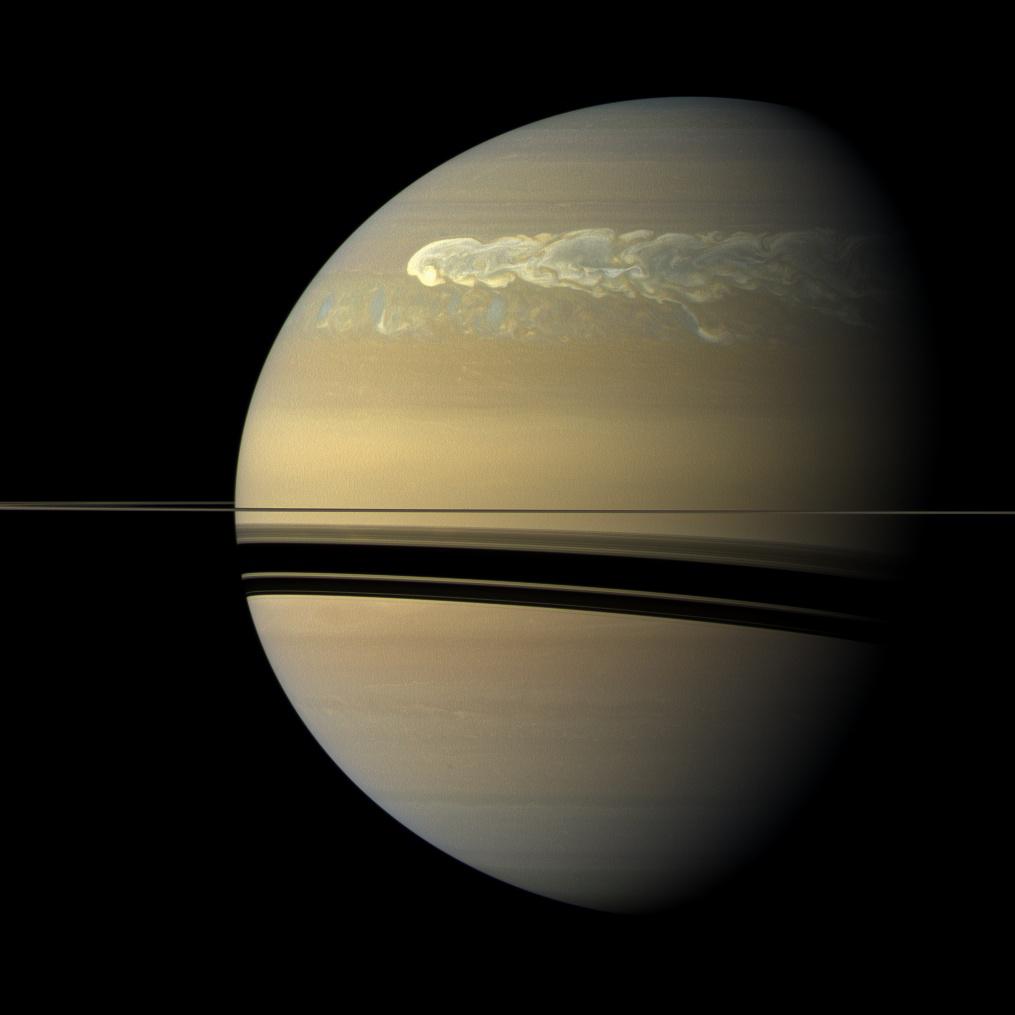Scientists analyzing data from NASA’s Cassini spacecraft have the first-ever, up-close details of a Saturn storm that is eight times the surface area of Earth and the biggest observed by spacecraft orbiting or flying by Saturn. The study appears in a paper published online July 6, 2011 in the journal Nature.
On Dec. 5, 2010, Cassini first detected the storm that has been raging ever since. Pictures from Cassini’s imaging cameras show the storm wrapping around the entire planet, covering approximately two billion square miles (four billion square kilometers).

Scientists studied the sounds of the new storm’s lightning strikes and analyzed images taken between December 2010 and February 2011. At its most intense, the storm generated more than 10 lightning flashes per second.
Andrew Ingersoll, an author of the study and a Cassini imaging team member at the California Institute of Technology, said:
Saturn is not like Earth and Jupiter, where storms are fairly frequent. Weather on Saturn appears to hum along placidly for years and then erupt violently. I’m excited we saw weather so spectacular on our watch.

Cassini has detected 10 lightning storms on Saturn since the spacecraft entered the planet’s orbit in 2004 and its southern hemisphere was experiencing summer, with full solar illumination not shadowed by the rings. Those storms rolled through an area in the southern hemisphere dubbed “Storm Alley.” But the sun’s illumination on the hemispheres flipped around August 2009, when the northern hemisphere began experiencing spring.
Georg Fischer, the paper’s lead author and a radio and plasma wave science team member at the Austrian Academy of Sciences in Graz, said:
This storm is thrilling because it shows how shifting seasons and solar illumination can dramatically stir up the weather on Saturn. We have been observing storms on Saturn for almost seven years, so tracking a storm so different from the others has put us at the edge of our seats.
As part of a new “Saturn Storm Watch” campaign, Cassini looks at likely storm locations on Saturn. On the same day the radio and plasma wave instrument detected the first lightning, Cassini’s cameras happened to be pointed at the right location and captured an image of a small, bright cloud. Fischer sent out a notice to the worldwide amateur astronomy community to collect more images, and a flood of amateur images helped scientists track the storm as it grew rapidly, wrapping around the planet by late January 2011.
The storm is the biggest observed by spacecraft orbiting or flying by Saturn. NASA’s Hubble Space Telescope captured images in 1990 of an equally large storm.
Bottom line: NASA’s Cassini spacecraft has produced details of a Saturn storm that is eight times the surface area of Earth. A study of the findings, by Andrew Ingersoll, Georg Fischer and their team, appears in a paper published online July 6, 2011 in the journal Nature.
Read more at NASA/JPL
Cassini Solstice Mission
Moon, Saturn from nightfall to midnight on July 7
Icy moon zaps Saturn with electron beams











